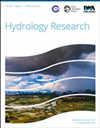A deep learning-based hybrid approach for multi-time-ahead streamflow prediction in an arid region of Northwest China
IF 2.4
4区 环境科学与生态学
Q2 Environmental Science
引用次数: 0
Abstract
Accurate streamflow prediction is crucial for effective water resource management. However, reliable prediction remains a considerable challenge because of the highly complex, non-stationary, and non-linear processes that contribute to streamflow at various spatial and temporal scales. In this study, we utilized a convolutional neural network (CNN)–Transformer–Long short-term memory (LSTM) (CTL) model for streamflow prediction, which replaced the embedding layer with a CNN layer to extract partial hidden features, and added a LSTM layer to extract correlations on a temporal scale. The CTL model incorporated Transformer's ability to extract global information, CNN's ability to extract hidden features, and LSTM's ability to capture temporal correlations. To validate its effectiveness, we applied it for streamflow prediction in the Shule River basin in northwest China across 1-, 3-, and 6-month horizons and compared its performance with Transformer, CNN, LSTM, CNN–Transformer, and Transformer–LSTM. The results demonstrated that CTL outperformed all other models in terms of predictive accuracy with Nash–Sutcliffe coefficient (NSE) values of 0.964, 0.912, and 0.856 for 1-, 3-, 6-month ahead prediction. The best results among the five comparative models were 0.908, 0.824, and 0.778, respectively. This indicated that CTL is an outstanding alternative technique for streamflow prediction where surface data are limited.基于深度学习的混合方法,用于中国西北干旱地区多时段河水流量预测
准确的流量预测对于有效的水资源管理至关重要。然而,由于不同时空尺度的河水流量具有高度复杂性、非稳态性和非线性过程,因此可靠的预测仍然是一个相当大的挑战。在本研究中,我们利用卷积神经网络(CNN)-变换器-长短期记忆(LSTM)(CTL)模型进行了流量预测,该模型用 CNN 层取代了嵌入层以提取部分隐藏特征,并添加了一个 LSTM 层以提取时间尺度上的相关性。CTL 模型融合了 Transformer 提取全局信息的能力、CNN 提取隐藏特征的能力以及 LSTM 捕捉时间相关性的能力。为了验证 CTL 模型的有效性,我们将其应用于中国西北部疏勒河流域 1 个月、3 个月和 6 个月的流量预测,并将其与 Transformer、CNN、LSTM、CNN-Transformer 和 Transformer-LSTM 进行了性能比较。结果表明,CTL 的预测准确性优于所有其他模型,其 1 个月、3 个月、6 个月预测的纳什-萨特克利夫系数 (NSE) 值分别为 0.964、0.912 和 0.856。五个比较模型的最佳结果分别为 0.908、0.824 和 0.778。这表明,在地表数据有限的情况下,CTL 是一种出色的河水流量预测替代技术。
本文章由计算机程序翻译,如有差异,请以英文原文为准。
求助全文
约1分钟内获得全文
求助全文
来源期刊

Hydrology Research
Environmental Science-Water Science and Technology
CiteScore
5.30
自引率
7.40%
发文量
70
审稿时长
17 weeks
期刊介绍:
Hydrology Research provides international coverage on all aspects of hydrology in its widest sense, and welcomes the submission of papers from across the subject. While emphasis is placed on studies of the hydrological cycle, the Journal also covers the physics and chemistry of water. Hydrology Research is intended to be a link between basic hydrological research and the practical application of scientific results within the broad field of water management.
 求助内容:
求助内容: 应助结果提醒方式:
应助结果提醒方式:


